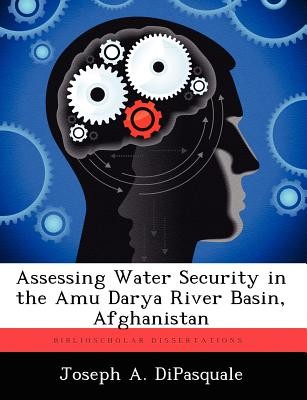
- We will send in 10–14 business days.
- Author: Joseph A DiPasquale
- Publisher: BiblioScholar
- ISBN-10: 1249404606
- ISBN-13: 9781249404606
- Format: 18.9 x 24.6 x 0.8 cm, softcover
- Language: English
- SAVE -10% with code: EXTRA
Assessing Water Security in the Amu Darya River Basin, Afghanistan (e-book) (used book) | bookbook.eu
Reviews
Description
New data and previous studies were used with quantitative analysis to assess Afghanistan's effect on water security in the Amu Darya river basin from 1995 to 2005. An event database constructed from open source news reporting and a geographic information system (GIS) of the basin combined to evaluate the basin's risk for water-related conflict relative to six factors: overall relations; population density, per capita income; freshwater treaty status; internationalization potential of the basin; and water development projects. The thesis evaluated the quantitative techniques employed for their utility in planning, executing, and assessing military operations in relation to water resources. Afghanistan's effect on water security marginally increased the risk of conflict over water while increasing non-water-related levels of cooperation among riparian neighbors. Population density and internationalization potential did not contribute to increased risk, but income level, treaty status, and development projects did contribute to increased risk for conflict. The techniques demonstrated their utility for military planners, principally at the operational and strategic levels as a tool for long-range assessment and monitoring. Tactical utility was found to be limited, but modifications to database and GIS layer development show potential for more use of the techniques in the tactical environment.
EXTRA 10 % discount with code: EXTRA
The promotion ends in 15d.01:54:04
The discount code is valid when purchasing from 10 €. Discounts do not stack.
- Author: Joseph A DiPasquale
- Publisher: BiblioScholar
- ISBN-10: 1249404606
- ISBN-13: 9781249404606
- Format: 18.9 x 24.6 x 0.8 cm, softcover
- Language: English English
New data and previous studies were used with quantitative analysis to assess Afghanistan's effect on water security in the Amu Darya river basin from 1995 to 2005. An event database constructed from open source news reporting and a geographic information system (GIS) of the basin combined to evaluate the basin's risk for water-related conflict relative to six factors: overall relations; population density, per capita income; freshwater treaty status; internationalization potential of the basin; and water development projects. The thesis evaluated the quantitative techniques employed for their utility in planning, executing, and assessing military operations in relation to water resources. Afghanistan's effect on water security marginally increased the risk of conflict over water while increasing non-water-related levels of cooperation among riparian neighbors. Population density and internationalization potential did not contribute to increased risk, but income level, treaty status, and development projects did contribute to increased risk for conflict. The techniques demonstrated their utility for military planners, principally at the operational and strategic levels as a tool for long-range assessment and monitoring. Tactical utility was found to be limited, but modifications to database and GIS layer development show potential for more use of the techniques in the tactical environment.


Reviews